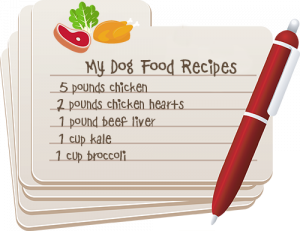As a dog owner, one of the scariest things you can encounter is the possibility that your dog has been poisoned.
Unfortunately, dog poisoning can happen on the watch of even the most diligent and cautious pet owner.
That’s why it’s important to know dog poisoning symptoms and signs to look out for if you suspect your dog has swallowed something toxic.
Dog Poisoning Symptoms
Dog poisoning symptoms can vary based on the kind of poisoning and the amount of time that’s passed (more on this in the next section).
The most common dog poisoning symptoms to watch out for include:
- Vomiting and diarrhea
- Loss of appetite
- Trembling
- Lethargy or weakness
- Seizures or tremors
- Excessive drooling or panting
- Changes in breathing or heart rate
- Disorientation, confusion or agitation
- Ataxia (staggering)
- Bleeding from the mouth, nose, or rectum
- Rapid heart rate
- Fever
Dog Poisoning Symptoms Timeline
If you suspect your dog has eaten something he shouldn’t have, it’s crucial to keep an eye on him and to have a sense of the dog poisoning symptoms timeline … meaning how the timing of symptoms can differ depending on the type of poison and the amount swallowed.
In other words: it’s essential to know not only the potential dog poisoning symptoms to look out for, but also when they may occur. You’ll need to call Poison Control as explained below, to learn the specifics of whatever your dog has eaten.
When it comes to food poisoning, for example, symptoms can manifest anywhere from a few minutes to several hours after ingestion. So if your pup has eaten tainted meat, keep a close eye on him for the next few hours. Meat contaminated with salmonella, for instance, can cause symptoms like vomiting, diarrhea, and feve that can appear anywhere from six to 72 hours after ingestion.
On the other hand, some poisons may take days to show any symptoms. Signs of plant poisoning in dogs are notorious for this … because symptoms of certain plant toxins can take days to appear. That’s why if you know your dog has eaten something toxic, it’s important to keep track of when he ate it and what he ate. Some signs of plant poisoning in dogs to watch out for include lethargy, vomiting, diarrhea, and seizures.
For more specific information, check out these other posts about various types of poisoning.
According to the 24/7 Pet Poison Hotline website, chocolate is by far the most common toxin eaten by dogs.
When And How To Call Dog Poison Control
Xylitol, chocolate, and other potentially poisonous substances for dogs, including household products and medications, can be fatal, and can advance quickly. So regardless of the type of poisoning, if you even suspect your dog has eaten something toxic, don’t wait for symptoms to appear before seeking help.
Contact your veterinarian or a dog poison control center immediately for guidance on how to proceed. They can help you determine if your dog needs to be seen immediately or if you can monitor him at home.
Dog Poison Control Numbers
Here are the main poison control websites and numbers. They may charge you for consulting them.
- ASPCA Animal Poison Control Center at (888) 426-4435
- 24/7 Animal Poison Control Center/Pet Poison Hotline for both Pet Owners and Veterinarians at (855) 764-7661. They also publish a list of poisons you should know about.
How To Treat A Poisoned Dog At Home
How to treat a poisoned dog at home will depend on many factors, including the type of poisoning, the breed and size of dog, and the dog poisoning symptoms he’s showing. So it’s hard to give general advice.
That’s why if you suspect your dog has been poisoned, the first thing to do is to contact your veterinarian or a pet poison control center immediately. They can give you specific guidance based on the type of poison your dog swallowed and the severity of the situation.
Induce Vomiting
In some cases, your vet may instruct you to induce vomiting in your dog using hydrogen peroxide. This can help remove any remaining poison from their stomach before it can be absorbed into their bloodstream.
Caution: it’s important to note that not all types of poisoning can be treated with vomiting, and inducing vomiting can sometimes make things worse depending on the situation and type of poisoning. So don’t just induce vomiting without talking to your vet first. Always follow the advice of your veterinarian and ask her for specific instructions on how much hydrogen peroxide to give.
Activated Charcoal
Another option for treating a poisoned dog at home is to give activated charcoal. This substance can help bind to the toxins in your dog’s digestive system and prevent them from being absorbed into his bloodstream.
Activated charcoal is generally safe to use in dogs, but again, it’s best to consult with your veterinarian before using it, to make sure it’s the right thing to do in your dog’s case, depending on what he ate.
Supportive Care
In addition to the specific treatments above, you can also provide supportive care for your dog at home.
This may include providing plenty of fresh water to keep him hydrated, giving him a comfortable and quiet place to rest, and monitoring his symptoms closely. If you’ve contacted your veterinarian she may have given you subcutaneous fluids or other medications to give at home.
If you notice any changes in your dog’s behavior or condition, contact your veterinarian immediately.
Bottom Line | Dog Poisoning Symptoms
Being aware of dog poisoning symptoms and knowing how to take action can help keep your dog safe and healthy.
Remember that when it comes to potential poisoning, time is of the essence. Don’t waste time researching online, but immediately seek help if you suspect your dog has been exposed to something toxic. Call the dog poison control hotlines and numbers listed above immediately.











